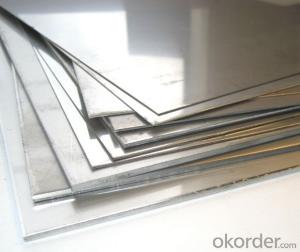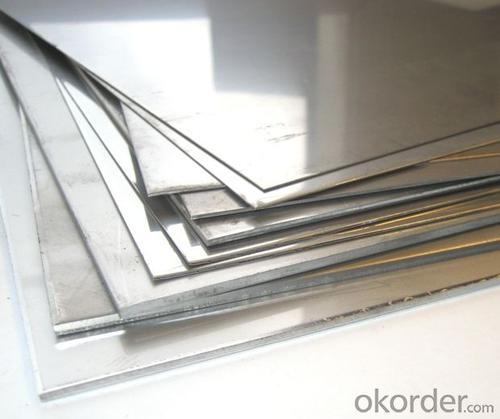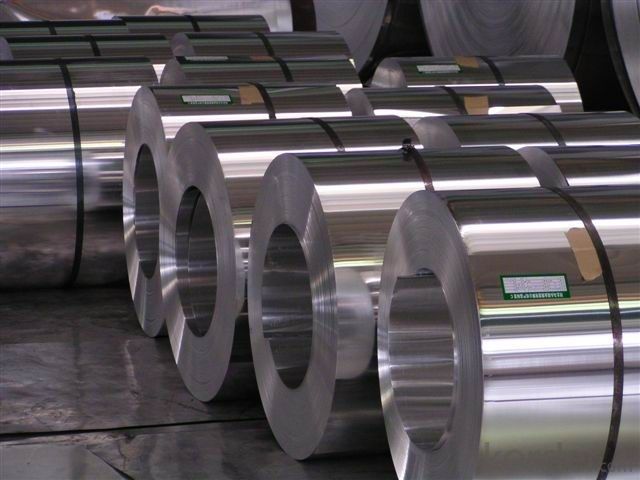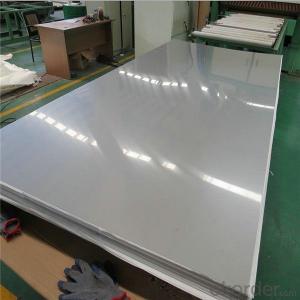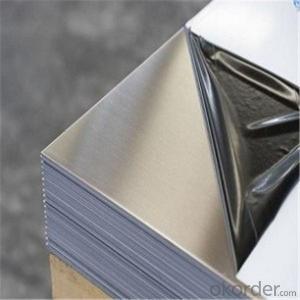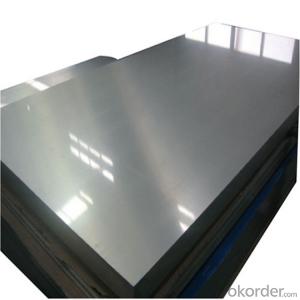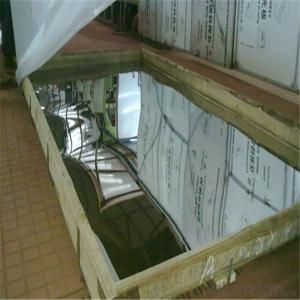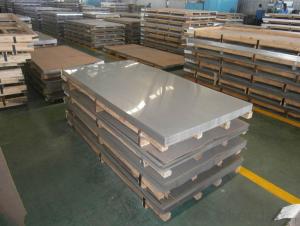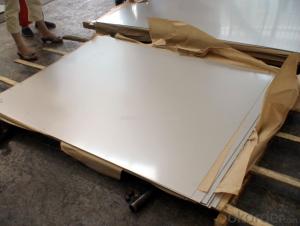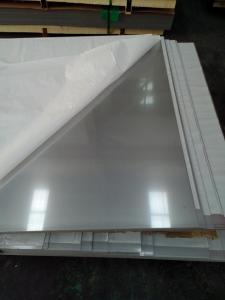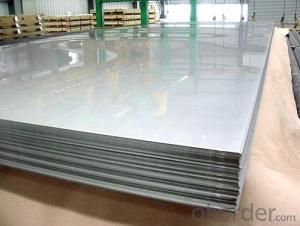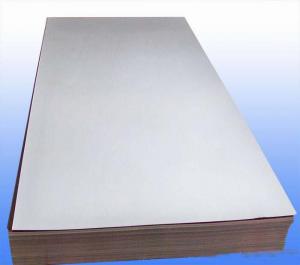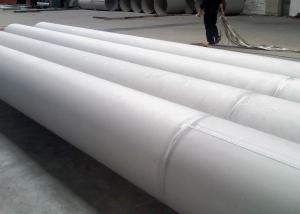Stainless Steel Sheet SS201/304/316/316L
- Loading Port:
- Shanghai
- Payment Terms:
- TT OR LC
- Min Order Qty:
- 1 m.t.
- Supply Capability:
- 20000 m.t./month
OKorder Service Pledge
OKorder Financial Service
You Might Also Like
Specification
Stainless Steel Sheet SS201/304/316/316L
Packaging Details:Wooden pallets,water proof paper-20'GP or 40'GP for stainless steel sheet.
Delivery Detail:within 5-7 days after receiving the deposit
1. Specifications about stainless steel sheet
Commodity | Professional 430 201 202 304 304l 316 316l 321 310s 309s 904l stainless steel sheet |
Grade | 201,202,304,304L,316,316L,310S,309S,321,301,310,410,420,430,904L |
Brand | TISCO ,BAOSTEEL,POSCO,JISCO,LISCO |
Certification | SGS,BV,IQI,TUV,ISO,etc |
Thickness | 0.2mm-150mm |
Width | 1000,1219,1250,1500mm, or as your requirements |
Length | 2000,2438,2500,3000,6000mm, or as your requirements |
Surface | No.1, 2B, BA, 8K Mirror, Hairline,satin, Embossed,brush,No.4,HL,matt,pvc film,laser film. |
Standard | ASTM,AISI,SUS,JIS,EN,DIN,GB, ASME,etc |
Delivery time | 5-7 days after confirming the order |
MOQ | 1 Ton |
Advantages | Showing the splendor of your quality, wearresistant as well , strong corrosion resistance and decorative effect, durable and beautiful in good taste. |
2.Production Flow about stainless steel sheet
Raw materials are sending to hot rolling units for rolling into different sizes
Hot rolled material is annealing in cold; rolled annealing furnace and pickling in acid.
All mill rolls are grinded on precision grinding machine with proper chamfering after first shiftoperation.
All sheets are pickled in different tanks and dried on brush roll machine before dispatched.
These sheets are again annealing and are sent to straighten machine for straightening.
Inspections are done at various stages. Keep proper control overall internal process via rolling,annealin and pickling by our experienced staff.
3.Surface--stainless steel sheet
| Surface Finish | Definition | Application |
| 2B | Those finished, after cold rolling, by heat treatment, pickling or other equivalent treatment and lastly by cold rolling to given appropriate luster. | Medical equipment, Food industry, Construction material, Kitchen utensils. |
BA/8K mirror | Those processed with bright heat treatment after cold rolling. | Kitchen utensils, Electric equipment, Building construction. |
| NO.3 | Those finished by polishing with No.100 to No.120 abrasives specified in JIS R6001. | Kitchen utensils, Building construction. |
| NO.4 | Those finished by polishing with No.150 to No.180 abrasives specified in JIS R6001. | Kitchen utensils, Building construction, Medical equipment. |
| Hairline | Those finished polishing so as to give continuous polishing streaks by using abrasive of suitable grain size. | Building Construction. |
| NO.1 | The surface finished by heat treatment and pickling or processes corresponding there to after hot rolling. | Chemical tank, pipe. |

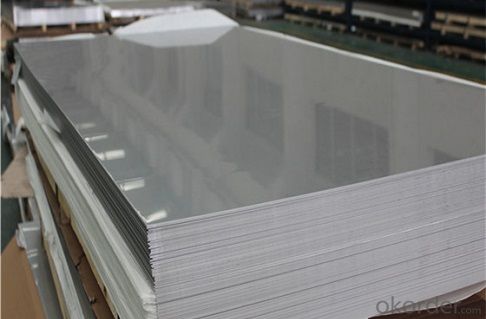

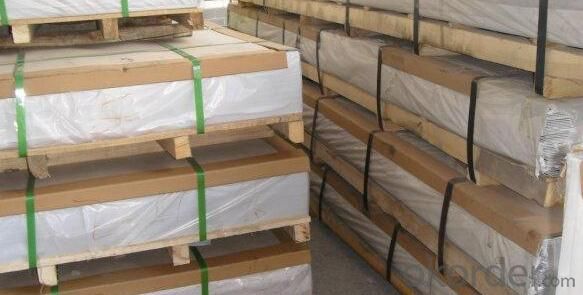
- Q: How do you determine the thickness of stainless steel sheets required for a specific application?
- To determine the thickness of stainless steel sheets required for a specific application, several factors need to be considered. 1. Load-bearing capacity: The first step is to determine the maximum load the stainless steel sheets will need to support. This can be calculated by considering the weight of the objects or materials that will be placed on the sheets. It is important to account for any potential dynamic loads or impact forces that may be applied. 2. Deflection limits: Deflection refers to the amount of bending or sagging that occurs when a load is applied to the stainless steel sheets. The deflection limits will depend on the specific application and the desired performance of the sheets. In general, minimizing deflection is crucial for structural integrity and to ensure the stainless steel sheets can handle the intended load without excessive bending. 3. Material properties: Stainless steel sheets come in different grades, each with its own mechanical properties. The tensile strength, yield strength, and hardness of the stainless steel should be considered to ensure it can withstand the required load and any potential environmental conditions such as corrosion or extreme temperatures. 4. Safety factors: It is important to apply appropriate safety factors to ensure the stainless steel sheets have a margin of safety. Safety factors account for uncertainties in load calculations, material properties, and other factors. The safety factor can vary depending on the level of confidence required, but it is typically recommended to apply a safety factor of at least 1.5 to 2. 5. Industry standards and regulations: Depending on the specific application, there may be industry standards or regulations that dictate the minimum thickness requirements for stainless steel sheets. It is important to consult these standards and ensure compliance to ensure the sheets meet any safety or performance requirements. By considering these factors and performing engineering calculations, it is possible to determine the appropriate thickness of stainless steel sheets required for a specific application. It is always recommended to consult with an experienced engineer or stainless steel supplier to ensure accurate calculations and to account for any specific requirements or considerations unique to the application.
- Q: What are the different types of stainless steel sheet surface coatings for outdoor applications?
- Outdoor applications commonly use various types of stainless steel sheet surface coatings. These coatings aim to enhance the stainless steel's durability and corrosion resistance, making it suitable for harsh outdoor environments. One commonly used coating for outdoor applications is powder coating. This involves applying a dry powder to the stainless steel surface and then curing it under heat to create a protective layer. Powder coating offers excellent resistance against corrosion, UV rays, and chemicals, making it perfect for outdoor use. Furthermore, it provides a wide range of color options, allowing for customization and aesthetic appeal. Another type of coating frequently employed for outdoor applications is PVD (Physical Vapor Deposition) coating. This process entails depositing a thin film of material onto the stainless steel surface using a vacuum chamber. PVD coatings offer outstanding adhesion, wear resistance, and corrosion resistance, making them suitable for outdoor use. They also provide various decorative finishes like gold, bronze, or black, which can enhance the stainless steel's appearance. In addition, stainless steel can be coated with ceramic for outdoor applications. Ceramic coatings are typically applied using a high-temperature spray process, resulting in a hard, protective layer on the stainless steel surface. These coatings offer superior resistance against abrasion, chemicals, and UV rays, making them ideal for highly durable outdoor applications. To summarize, stainless steel sheet surface coatings for outdoor applications include powder coating, PVD coatings, and ceramic coatings. Each of these coatings offers distinct benefits in terms of corrosion resistance, durability, and aesthetic appeal, enabling the use of stainless steel in a wide range of outdoor environments.
- Q: Welding defects analysis of 1.5mm stainless steel plate
- OveripThe partial fusion of molten metal flowing to the base metal other than the weld.Reason: improper selection of welding parametersGroove cleaning is not clean, the arc heat loss on the oxide skin, so that the parent material is not melting.Hazard: the surface is the fact is often below the incomplete fusion, lack of penetration;Weld geometry changes, stress concentration, pipe welding tubular medium circulation reducing interface meter.
- Q: Are stainless steel sheets resistant to saltwater?
- Yes, stainless steel sheets are resistant to saltwater. Stainless steel is known for its corrosion resistance, and it is particularly well-suited for environments with high levels of saltwater exposure. The chromium content in stainless steel forms a protective layer on the surface of the metal, preventing rust and corrosion. This makes stainless steel sheets an excellent choice for applications in marine environments, such as boat construction, offshore structures, and coastal infrastructure. Additionally, stainless steel's resistance to saltwater also makes it suitable for other applications like coastal architecture, kitchen equipment, and medical instruments.
- Q: What are the benefits of using embossed stainless steel sheets in elevator doors?
- There are several benefits of using embossed stainless steel sheets in elevator doors. Firstly, the embossed pattern adds a visually appealing and aesthetic element to the elevator doors, enhancing the overall appearance of the elevator interior. This can create a more luxurious and sophisticated atmosphere for passengers. Secondly, embossed stainless steel sheets are highly durable and resistant to scratches, dents, and corrosion. Elevator doors are subjected to constant use and can be easily damaged, but the use of embossed stainless steel sheets ensures that the doors maintain their pristine condition for a longer period of time. This durability also reduces maintenance and replacement costs over the lifespan of the elevator. Additionally, embossed stainless steel sheets provide a high level of hygiene. Stainless steel is inherently resistant to bacteria and germs, making it an ideal material for elevator doors. The embossed pattern further aids in hiding fingerprints and smudges, ensuring that the doors remain clean and sanitary with minimal maintenance. Moreover, embossed stainless steel sheets offer excellent fire resistance properties. Elevators are enclosed spaces, and in the unfortunate event of a fire, the use of embossed stainless steel sheets in the doors can help contain the flames and prevent the spread of fire, providing an added level of safety for passengers. Lastly, embossed stainless steel sheets are easy to clean and maintain. With a smooth surface and resistance to stains and dirt, these sheets can be easily wiped down with a mild cleaner, keeping the elevator doors looking pristine and reducing the amount of time and effort required for cleaning. In summary, the benefits of using embossed stainless steel sheets in elevator doors include enhanced aesthetics, durability, hygiene, fire resistance, and ease of maintenance. These advantages make embossed stainless steel sheets a popular choice for elevator manufacturers and building owners alike.
- Q: How can I classify stainless steel plates?
- The stainless steel plate is classified according to the mode of production: it can be divided into hot rolled steel plate (steel plate heated by reheating furnace) and cold-rolled steel plate (steel plate produced by cold rolling process).
- Q: Are stainless steel sheets resistant to staining from food?
- Yes, stainless steel sheets are highly resistant to staining from food. Stainless steel is known for its excellent corrosion resistance and non-reactivity with various substances, including food. It is a popular choice for kitchen appliances and cookware due to its ability to withstand prolonged exposure to food without staining or reacting chemically. Stainless steel sheets are also easy to clean, making them ideal for food preparation areas where cleanliness is essential. Additionally, the smooth and non-porous surface of stainless steel sheets prevents the absorption of food particles and liquids, reducing the risk of staining. Overall, stainless steel sheets provide a durable and stain-resistant option for food-related applications.
- Q: Can stainless steel sheets be used for kitchen countertops?
- Yes, stainless steel sheets can be used for kitchen countertops. Stainless steel is a durable and hygienic material that is resistant to stains, heat, and bacteria. It is a popular choice for kitchen countertops due to its modern aesthetic, easy maintenance, and ability to withstand heavy use.
- Q: What are the benefits of using perforated stainless steel sheets?
- Using perforated stainless steel sheets in various applications offers several advantages. Firstly, these sheets provide excellent strength and durability due to the high tensile strength and corrosion resistance of stainless steel. This makes them a reliable option for applications that require materials with long-lasting properties. Additionally, the structural integrity of the sheets remains uncompromised even with the presence of perforations, ensuring their ability to withstand heavy loads and harsh environments. Secondly, these sheets offer exceptional ventilation and airflow. The perforations allow air and gases to pass through, making them suitable for applications that necessitate proper ventilation, such as HVAC systems, industrial machinery, and automotive components. This ventilation capability prevents the accumulation of heat and moisture, which is crucial for maintaining the efficiency and safety of various equipment. Furthermore, the design and aesthetic versatility of perforated stainless steel sheets are noteworthy. The ability to customize the size, shape, and pattern of the perforations enables the creation of unique and visually appealing designs. Consequently, they are suitable for architectural applications, interior design elements, and decorative purposes. The wide range of available perforation patterns also allows for the control of light transmission, resulting in interesting lighting effects or privacy screens. Moreover, these sheets possess excellent filtration capabilities. The perforations can be designed to filter out specific particles or substances, making them ideal for applications in the food and beverage industry, pharmaceuticals, and water treatment systems. This ensures the cleanliness and purity of the materials or fluids passing through the sheets, thereby enhancing overall product quality and safety. Lastly, perforated stainless steel sheets are easy to clean and maintain. Stainless steel's non-porous nature makes it resistant to stains, dirt, and bacteria. This, coupled with the presence of perforations, facilitates easy cleaning and disinfection, making them suitable for applications that require high levels of hygiene, such as commercial kitchens, medical facilities, and laboratories. In conclusion, the utilization of perforated stainless steel sheets offers numerous benefits, including strength and durability, ventilation capabilities, design versatility, filtration capabilities, and ease of cleaning and maintenance. These qualities make them a preferred choice in a wide range of industries and applications.
Send your message to us
Stainless Steel Sheet SS201/304/316/316L
- Loading Port:
- Shanghai
- Payment Terms:
- TT OR LC
- Min Order Qty:
- 1 m.t.
- Supply Capability:
- 20000 m.t./month
OKorder Service Pledge
OKorder Financial Service
Similar products
Hot products
Hot Searches
Related keywords
